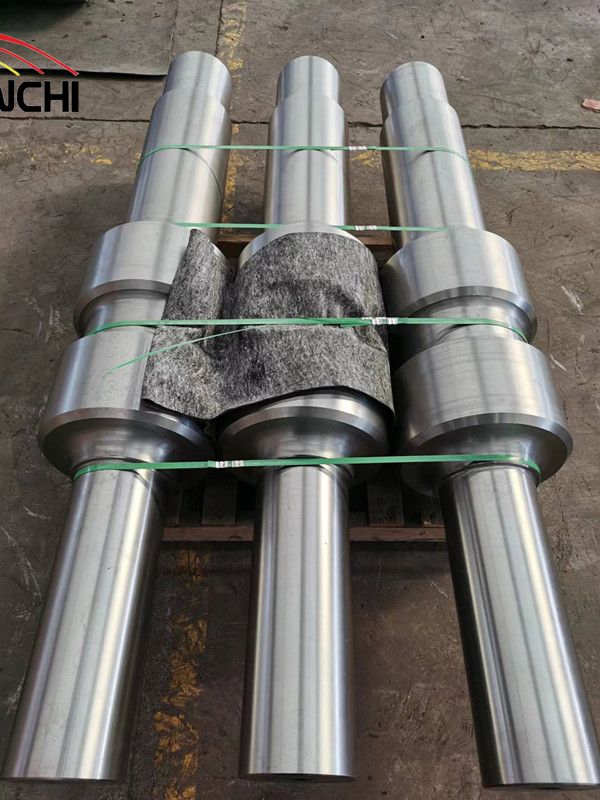Jul. 04, 2024
As a crucial part of mechanical transmission system, transmission shaft plays a key role in transmitting power from engine to wheel or other mechanical parts. Its design principle seems simple, but it contains profound engineering knowledge and sophisticated manufacturing technology. Let's explore the principles of the drive shaft and uncover the veil of this wonderful thing.
A transmission shaft is an essential element in the world of machinery, providing a vital connection that allows power generated by engines to be effectively transmitted to various components. This mechanical device is usually crafted from durable metal materials characterized by strength and rigidity. It serves to link the engine with the drive wheels, converting rotational energy into movement. Essentially, the drive shaft is responsible for transforming the engine's rotational motion into the rotational motion of the wheels or other machinery, enabling vehicles and equipment to function efficiently.
Transmission shaft is a mechanical device used to transmit power, usually made of metal materials, with a certain strength and rigidity. It connects the engine and the driving wheel, transmits power through rotation, and enables the vehicle or mechanical equipment to run. The main function of the drive shaft is to convert the rotational motion generated by the engine into rotational motion of the wheels or other mechanical components, thereby propelling the vehicle forward or achieving other functions.
The operation of the drive shaft is reliant on fundamental mechanics and dynamics principles. When the engine generates power, this energy is transferred to the propeller shaft via the gearbox. The propeller shaft then carries this power along its axis, distributing it to the wheels through various mechanisms, such as differentials or transmissions. The design of a transmission shaft must account for numerous factors, including speed, torque, and transmission ratios, to guarantee that it meets the operational demands of the vehicle.
Drive shafts come in many types based on their transmission methods and structural designs. They include linear transmission shafts ideal for long-distance power transfer with high torque capability; universal transmission shafts that enable power transmission at various angles, making them suitable for adjustable steering setups; and flexible transmission shafts that can absorb vibration and displacement, thereby mitigating noise and enhancing system reliability.
Creating a transmission shaft involves several stages, including material selection, forging, heat treatment, precision machining, and more. The materials often consist of high-quality alloy or carbon steel to ensure optimal strength and wear resistance. Precision machining and careful assembly are paramount to maintain the rotational balance and axial integrity of the shaft, thus ensuring reliable power transmission.

To ensure optimal operation and longevity of the transmission shaft, regular maintenance is crucial. This entails checking for loose connections, ensuring adequate lubrication, and inspecting bearings for wear. Prompt identification and rectification of any issues can prevent failures that could disrupt vehicle or machinery performance.
With the advent of new technologies and continual advancements in engineering, the design and manufacturing of transmission shafts are undergoing significant transformations. Future developments may focus on creating shafts that are lighter, stronger, and more intelligent. A lightweight structure can enhance vehicle fuel efficiency and performance, while innovative materials can boost durability. Furthermore, the integration of smart technologies may facilitate real-time monitoring and fault diagnosis.
As versatile transmission devices, drive shafts find extensive use in diverse machinery and vehicles. In automotive applications, they are integral to the drive system, directly impacting vehicle performance. In engineering machinery, drive shafts transmit necessary power and torque for operational tasks. Moreover, in the aerospace sector, they connect engines to propellers.
The transmission shaft's significance lies in its role in ensuring machinery operates effectively while also contributing to advancements in engineering technology. Designing and manufacturing these shafts requires interdisciplinary knowledge, including mechanics and materials science, fostering innovation and supporting the field's growth. Its reliability is critical for the safety and efficiency of machinery, providing a robust foundation for progress across industries.
The rapid evolution in intelligent manufacturing and digital technology heralds new opportunities for the custom transmission shaft market. The integration of intelligent sensors and data analytics enables real-time monitoring and predictive insights to avert potential failures. Furthermore, advancements in 3D printing may allow for customized design and rapid production, thereby enhancing efficiency and flexibility.
By thoroughly exploring the principles, types, manufacturing processes, maintenance, and future trends of the transmission shaft, its critical role in engineering technology becomes evident. This remarkable component will continue to be indispensable, facilitating scientific advancements and enhancing societal progress.
Previous: Introduction to low-pressure injection molding process
Next: None
If you are interested in sending in a Guest Blogger Submission,welcome to write for us!
All Comments ( 0 )